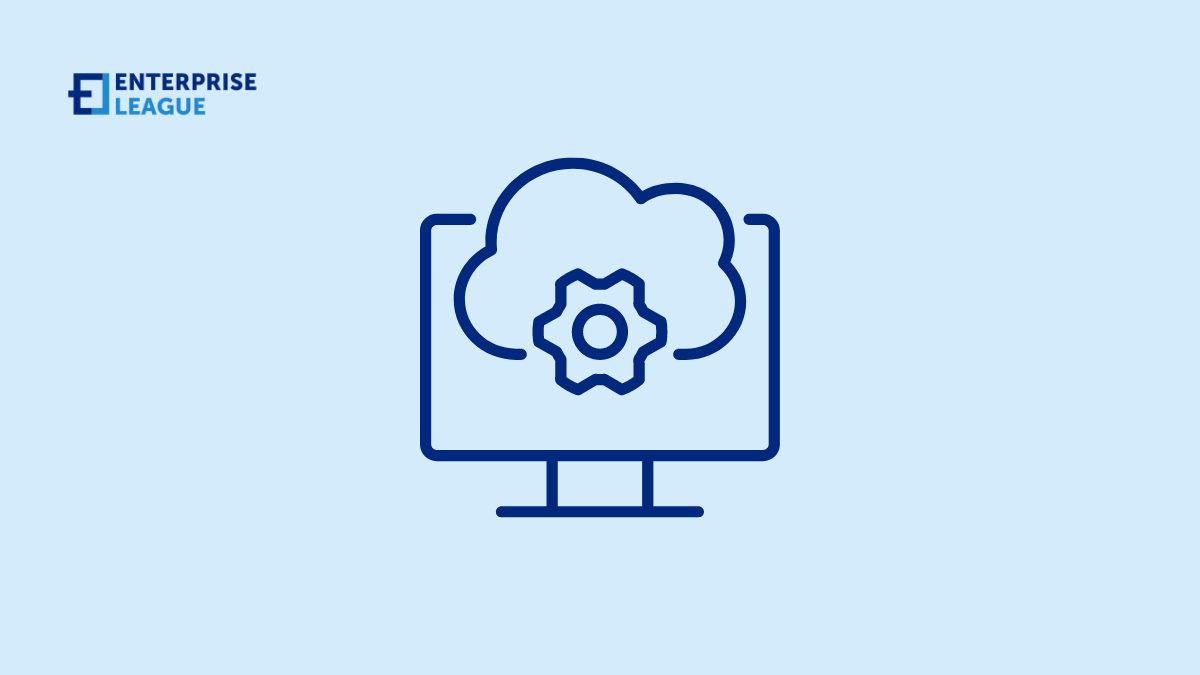Cloud application development has become a cornerstone of modern software development, enabling organizations to build and deploy applications faster and more efficiently than ever before.
Cloud application development services encompass a range of tools, technologies, and methodologies designed to facilitate the creation, deployment, and management of applications in the cloud. From infrastructure as a service (IaaS) to platform as a service (PaaS) and software as a service (SaaS), businesses have access to a variety of cloud-based resources to support their development efforts.
Foundation of cloud application development
At its core, cloud computing involves the delivery of computing services—including servers, storage, databases, networking, software, and more—over the Internet. This shift away from traditional on-premises infrastructure offers numerous benefits, including cost savings, scalability, and increased flexibility. Cloud development application services, a critical aspect of cloud computing, further enhance this ecosystem by providing platforms and tools tailored specifically for building and deploying applications in the cloud.
Cloud application development services encompass a range of offerings designed to streamline the development lifecycle and empower developers to create robust, scalable applications with ease. These services typically include integrated development environments (IDEs), continuous integration and continuous deployment (CI/CD) pipelines, version control systems, and collaboration tools. By leveraging these services, development teams can accelerate time-to-market, improve collaboration, and ensure the reliability and scalability of their applications.
Furthermore, cloud development application services often incorporate advanced features such as auto-scaling, monitoring, and analytics capabilities, enabling developers to optimize their applications for performance and cost efficiency. These services abstract away much of the underlying infrastructure complexity, allowing developers to focus on writing code and delivering value to end-users.
Emerging trends in cloud application development
Let’s look at some of the emerging trends in cloud application development.
Serverless computing
Serverless computing, also known as function as a service (FaaS), allows developers to run code without having to manage the underlying infrastructure. Instead of provisioning and managing servers, developers can focus on writing and deploying functions, which are executed in response to events or triggers.
Serverless computing offers several benefits, including reduced operational overhead, improved scalability, and lower costs. However, it also presents challenges related to performance optimization, vendor lock-in, and resource limits.
Serverless computing is gaining traction in various industries, particularly for event-driven applications, real-time processing, and batch-processing tasks. As adoption grows, developers are exploring new use cases and best practices for leveraging serverless architectures effectively.
Microservices architecture
Microservices architecture involves breaking down applications into smaller, loosely coupled services that can be developed, deployed, and scaled independently. This approach offers advantages such as improved agility, resilience, and maintainability compared to traditional monolithic architectures.
Microservices enable teams to iterate quickly, deploy changes without impacting other services, and scale components independently based on demand. Additionally, they promote a culture of autonomy, allowing teams to choose the best tools and technologies for each service.
Cloud platforms provide the ideal environment for deploying microservices, offering features such as containerization, orchestration, and auto-scaling. By leveraging cloud-native technologies, organizations can accelerate the development and delivery of microservices-based applications.
Containerization and orchestration
Docker is a containerization platform that allows developers to package applications and dependencies into lightweight, portable containers. Kubernetes, meanwhile, is an orchestration tool that automates the deployment, scaling, and management of containerized applications.
Containerization offers numerous benefits, including consistent environments, resource isolation, and efficient resource utilization. Containers also enable developers to build once and run anywhere, streamlining the deployment process across different environments.
Kubernetes simplifies the management of containerized applications, providing features such as automatic scaling, self-healing, and rolling updates. By leveraging Kubernetes, organizations can ensure high availability, resilience, and scalability for their cloud-native applications.
AI and machine learning integration
AI and machine learning technologies are increasingly being integrated into cloud applications to enhance functionality, improve user experiences, and drive insights from data. From natural language processing to computer vision, AI capabilities can be applied across various domains to unlock new opportunities for innovation.
Cloud platforms offer a range of tools and services for training, deploying, and managing machine learning models at scale. By leveraging these capabilities, developers can incorporate predictive analytics, recommendation systems, and other AI-driven features into their applications with ease.
AI-powered applications are transforming industries such as healthcare, finance, retail, and manufacturing, enabling organizations to automate processes, personalize experiences, and make data-driven decisions. As AI continues to evolve, its integration into cloud development workflows will become increasingly prevalent.
Edge computing
Edge computing involves processing data closer to the source of generation, reducing latency and bandwidth usage by offloading computation from centralized data centers to edge devices. This distributed approach enables real-time processing, low-latency responses, and improved reliability for cloud applications.
Edge computing offers several benefits for cloud application development, including enhanced performance, increased resilience, and support for latency-sensitive workloads. By moving computation closer to end-users or IoT devices, organizations can deliver faster, more responsive experiences.
Edge computing introduces challenges related to data security, network connectivity, and management complexity. Organizations must carefully evaluate their requirements and architecture to ensure a seamless integration of edge and cloud resources.
Best practices in cloud application development
Here are some of the best practices that you should be aware of when it comes to cloud application development.
Security considerations
Security forms the bedrock of cloud application development, necessitating a multi-layered approach to safeguard sensitive data, counter potential threats, and adhere to regulatory frameworks.
Best practices encompass various measures including encryption, which involves encoding data to prevent unauthorized access; access control mechanisms, which regulate user permissions to minimize the risk of data breaches; threat monitoring tools, which continuously scan for suspicious activities to detect and respond to security incidents promptly; and regular security audits, which assess the effectiveness of existing security measures and identify areas for improvement.
Performance optimization
Optimizing performance is crucial for delivering high-performing, scalable cloud applications that meet user expectations for responsiveness and reliability. Techniques such as caching involve storing frequently accessed data closer to the user, reducing the need for repeated data retrieval operations and improving throughput.
Load balancing distributes incoming network traffic across multiple servers to prevent overload and ensure optimal resource utilization. Additionally, code optimization focuses on streamlining code structure and algorithms to enhance efficiency and minimize processing delays.
CI/CD pipelines
CI/CD pipelines automate the software development lifecycle, streamlining the process of building, testing, and deploying code changes. Continuous Integration involves merging code changes into a shared repository and running automated tests to detect integration issues early. Continuous Deployment automates the deployment of code changes to production environments, enabling teams to deliver software updates quickly and reliably.
Monitoring and maintenance
Monitoring and maintenance are essential for ensuring the availability, performance, and reliability of cloud-based applications. Robust monitoring tools continuously track key performance metrics and alert administrators to potential issues, enabling proactive troubleshooting and incident response.
Establishing service level objectives (SLOs) helps define performance targets and monitor adherence to service level agreements (SLAs), ensuring that applications meet user expectations for reliability and responsiveness.
Conclusion
As we look to the future, the possibilities are limitless, with cloud technology poised to revolutionize industries, empower developers, and drive digital transformation on a global scale. By embracing emerging trends and best practices, organizations can confidently navigate the sky of cloud application development and achieve new heights of success.
More must-read stories from Enterprise League:
- Smart ways to enhance the efficiency of your business.
- Unique and creative guerrilla marketing ideas for small businesses.
- Are you aware of the negative effects that social media has on the workspace?
- Innovative and profitable business ideas with no employees.
- How to ask for a deposit in a contract without being awkward or losing a client.
Related Articles
14 unique business ideas with drones that guarantee a profit (2024)
If you are one of those that loves tech gadgets, we’ve made a list of 14 business ideas with drones that will inspire you to start a business in this field.
How mortgage workflow automation enhances loan officer efficiency
Embracing automation and its transformative impact allows loan officers to prioritize developing connections with borrowers and enhancing customer satisfaction.
26 best electrical equipment companies in 2024
Electrical equipment companies, in general, are companies working with products that produce, distribute, or use electrical energy.
14 unique business ideas with drones that guarantee a profit (2024)
If you are one of those that loves tech gadgets, we’ve made a list of 14 business ideas with drones that will inspire you to start a business in this field.
How mortgage workflow automation enhances loan officer efficiency
Embracing automation and its transformative impact allows loan officers to prioritize developing connections with borrowers and enhancing customer satisfaction.






